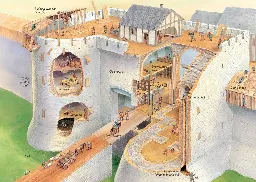the art style looks like an old puzzlemania magazine
No wheel yet?
The site was at it’s peak circa 7000 BCE, about 2000 years before the invention of the wheel.
City of famous ladder inventor.
I was there last year - they have a fantastic display about John Çatalhüyük and his invention. His stepson, Jimmy Çatalhüyük, is of course the famed inventor of the step ladder.
Really though, quite a cool site to visit. The joined walls were particularly interesting to see imo. Definitely would recommend if you’re ever in Konya.
The ladder was the first step on the way to civilisation.
i just know if i lived there I’d be the one living in that house that’s only accessible by going five ladders up and one back down
But why are the only doors the trapdoors on top?
just a guess
No footpaths or streets were used between the dwellings, which were clustered in a honeycomb-like maze. Most were accessed by holes in the ceiling and doors on the side of the houses, with doors reached by ladders and stairs. The rooftops were effectively streets.
- this would protect houses from any animal that can’t climb a ladder or the wall itself (also if they pull the ladders up, from anyone who doesn’t have a portable ladder)
- if houses are constructed in clusters, that would mean one less wall to build (maybe 2)
I read that it was for cooling. Doors and windows let a lot of the cool air escape.
Defensive reasons, probably. Ladders can be pulled up and enemies frustrated in that way, leaving no way to get in short of bashing down the house’s walls (a much more tedious and slower process than kicking down a door).
Very cool!





